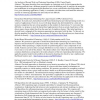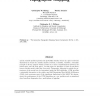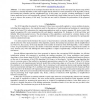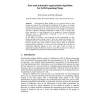150 search results - page 1 / 30 » EM Algorithms for Self-Organizing Maps |
IJCNN
2000
IEEE
13 years 8 months ago
2000
IEEE
eresting web-available abstracts and papers on clustering: An Analysis of Recent Work on Clustering Algorithms (1999), Daniel Fasulo : This paper describes four recent papers on cl...
NECO
1998
13 years 4 months ago
1998
Latent variable models represent the probability density of data in a space of several dimensions in terms of a smaller number of latent, or hidden, variables. A familiar example ...
IJCNN
2000
IEEE
13 years 8 months ago
2000
IEEE
It is often reported in the technique literature that the success of the self-organizing feature map (SOM) formation is critically dependent on the initial weights and the selectio...
ESANN
2004
13 years 5 months ago
2004
Self-Organizing Maps (SOM) are very powerful tools for data mining, in particular for visualizing the distribution of the data in very highdimensional data sets. Moreover, the 2D m...
CORR
2007
Springer
13 years 4 months ago
2007
Springer
—The parameterless self-organizing map (PLSOM) is a new neural network algorithm based on the self-organizing map (SOM). It eliminates the need for a learning rate and annealing ...




